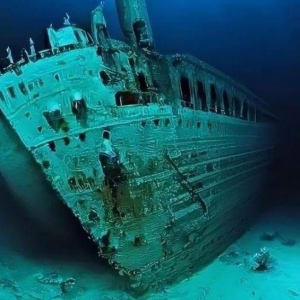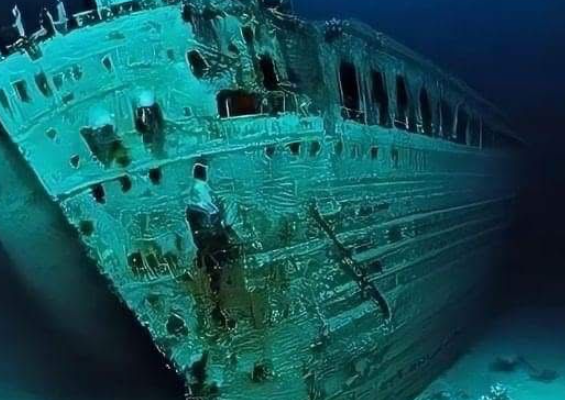
Groundbreaking 3D Images of the Titanic Wreck Reveal the Legendary Ship as Never Before
More than a century after the RMS Titanic sank beneath the icy waters of the North Atlantic, new technology has given humanity its most intimate look yet at the world’s most famous shipwreck. A stunning series of full-scale 3D images — captured using deep-sea mapping and photogrammetry — is reshaping what we know about the disaster and reigniting fascination with the ship that has haunted history for over 110 years.
For decades, the Titanic has existed in the public imagination as both legend and tragedy — a symbol of human ambition, innovation, and the limits of control over nature. The discovery of its wreck in 1985 by Dr. Robert Ballard opened a new chapter of exploration, but until now, every image and video taken of the ship was partial, obscured by darkness, pressure, and decay. The latest project, conducted by deep-sea specialists Magellan Ltd. and documentary producers from Atlantic Productions, has changed that forever.
Using cutting-edge sonar and underwater imaging technology, explorers have successfully created a complete digital twin of the Titanic — a three-dimensional reconstruction so detailed that even the serial numbers on propellers and the delicate shoes left in cabins are visible. The data, collected over more than 200 hours of deep-sea scanning, represents an unprecedented achievement in underwater archaeology.
The project’s lead oceanographer described it as “like removing the ocean” — a chance to finally see the Titanic as it rests today, in its full scale and solemn beauty, frozen in time two and a half miles below the surface.
The 3D model reveals the wreck in two main pieces, separated by about 2,600 feet on the seafloor. The bow section, still recognizable with its graceful curve and iconic railings, remains largely intact, while the stern, which imploded as it sank, lies scattered and twisted into an eerie field of debris. Between them lie thousands of objects: luggage, furniture, shoes, crockery, and remnants of the ship’s ornate interior.
For the first time, researchers can explore every detail of the ship without physically disturbing it. The model allows them to zoom in on tiny features — from the captain’s bathtub to the ornate ironwork of staircases — and study their condition in ways impossible through traditional submersible cameras. The clarity is so astonishing that scientists can now distinguish rivets and rust patterns, offering new insight into how the ship broke apart.
“This is a complete game-changer,” said Gerhard Seiffert, the project’s exploration lead. “For the first time, we can examine the entire wreck as one coherent entity — not just snapshots. It’s like standing on the seafloor beside it, able to walk around it in virtual reality.”
The scans were made using remotely operated submersibles that methodically mapped the site, taking over 700,000 high-resolution images from multiple angles. These were then stitched together by supercomputers into a seamless 3D reconstruction. The resulting model weighs several terabytes — the most detailed digital replica of any shipwreck ever created.
Historians believe this breakthrough could help answer long-standing questions about how the Titanic actually broke apart and sank. While eyewitness accounts from 1912 suggested the ship split in two near the surface, later explorations hinted it may have fractured as it plunged. With this model, experts can now trace stress fractures, hull deformation, and metal fatigue patterns with scientific precision.
One particularly striking revelation involves the ship’s impact crater. The new scans show a distinctive gouge pattern around the bow section, suggesting that the front end hit the seabed at a sharper angle than previously believed. This new data could alter simulations of the final descent, providing insight into the speed, trajectory, and violence of the impact.
Yet the images are more than a technical triumph — they are deeply emotional. Seeing the Titanic in such vivid clarity has stirred powerful reactions among historians, descendants of victims, and the general public. The ghostly detail captures both the grandeur of human achievement and the immense sorrow of its loss.
One of the most haunting views in the 3D rendering is the deck machinery, still perfectly aligned, where crew once labored to lower lifeboats on that fateful night. The grand staircase, long eroded, exists now only as a faint outline — a place where, in imagination, passengers once gathered in their finest clothes, unaware of what awaited them hours later.
For many, the digital reconstruction serves as both memorial and museum. It allows visitors — through virtual reality experiences now being developed — to “walk” the decks of the Titanic without ever disturbing the fragile site. This is especially important because the wreck is deteriorating rapidly due to bacteria that feed on its iron, a process scientists call “rusticle” decay. Some experts estimate that within a few decades, large portions of the ship may collapse entirely.
“This scan is a way of preserving the Titanic forever,” said Parker Roberts, a historian involved in the project. “Even when the wreck is gone, future generations will still be able to explore it exactly as it was.”
The technology has also revived ethical debates surrounding the ship. For years, controversy has surrounded salvage operations and the removal of artifacts. Many families of the victims view the wreck as a grave and believe it should remain undisturbed. The 3D mapping approach offers a respectful alternative — allowing study, preservation, and public education without physical intrusion.
The project team emphasizes that their goal is not exploitation but remembrance. “We’re not touching the ship,” said Seiffert. “We’re giving it a voice through science.”
The 3D model is already being used in classrooms and museums to teach not only maritime history but also engineering, geology, and environmental science. Its creation has also inspired renewed interest in the Titanic’s human stories — the courage of its passengers, the heroism of its crew, and the hubris of an era that believed a ship could be “unsinkable.”
Even after more than a century, the Titanic continues to hold the world’s imagination — not just as a ship, but as a mirror reflecting human vulnerability and resilience. Each new discovery, each photograph, and now each pixel of the 3D map brings us closer to understanding that April night in 1912, when over 1,500 lives were lost to the cold Atlantic.
The digital recreation offers something powerful: a bridge between past and present. It invites us to stand in silent awe, not only at what was built and lost, but at what endures — the lessons, the stories, and the collective memory that refuses to fade.
As one researcher put it: “The Titanic isn’t just a wreck. It’s a time capsule. And now, for the first time, we can open it without destroying it.”
In shimmering pixels and ghostly shapes, the Titanic has been resurrected — not as a spectacle, but as a monument to human ambition and fragility, resting forever in the silent depths of the sea, and now, eternally alive in the digital light of history

